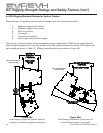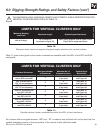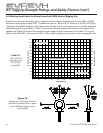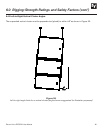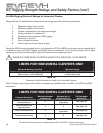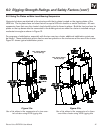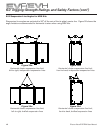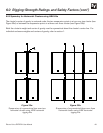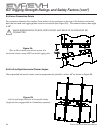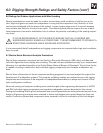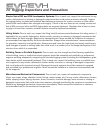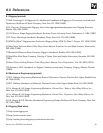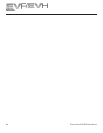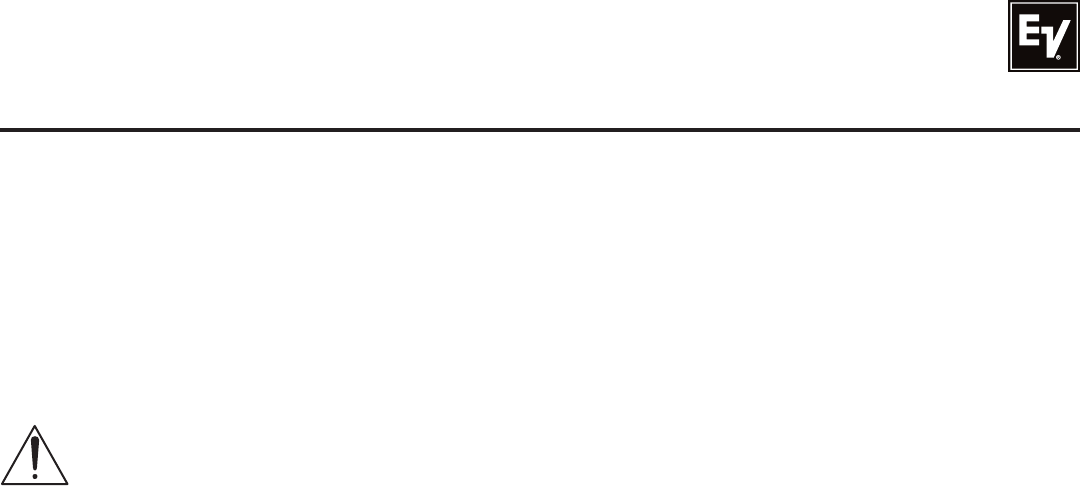
Electro-Voice EVF/EVH User Manual 51
6.6 Ratings for Outdoor Applications with Wind Loading
Special considerations must be made for outdoor venues where wind conditions could become a con-
cern. High wind gusts can push the loudspeakers in a way that the suspension lines’ direction of force
can become misaligned with the plane of the eyebolt. Larger clusters pose more of a concern because
more surface area exists for the wind to act upon. Counteracting these effects requires the use of addi-
tional suspension lines and/or stabilization lines to reduce the potential overloading of the existing suspen-
sion lines.
IT IS THE RESPONSIBILITY OF THE USER TO ENSURE THAT ALL CLUSTERS ARE
SUSPENDED SAFELY UNDER ALL CONDITIONS. IT IS RECOMMENDED TO CONSULT A
STRUCTURAL ENGINEER WHEN WINDS ARE ANTICIPATED.
It is recommended that all loudspeakers and rigging components are inspected after high wind conditions
have occurred.
6.7 Electro-Voice Structural-Analysis Procedures
Electro-Voice maintains a structural pull-test facility in Burnsville, Minnesota, USA, which includes load
cells with digital-electronic display and recording. The load cells are calibrated annually by an independent
laboratory to a standard traceable to the United States National Bureau of Standards. This pull-test facility
is capable of pulling to destruction both individual rigging components and complete loudspeaker sys-
tems.
Electro-Voice utilizes state-of-the-art computer modeling programs for structural analysis throughout the
development of loudspeaker systems. The computer modeling enables the complex forces in the rigging
components and enclosures to be analyzed for loudspeakers assembled into arrays and clusters in both
static and dynamic conditions.
Structural testing and computer modeling were used throughout the engineering development of all EVF
and EVH individual rigging components and complete loudspeaker systems described in this manual.
Testing and modeling involving both anticipated use and anticipated misuse were performed as part of the
analysis. Engineering prototypes were stressed to failure and designs were revised based on those test
results. Production systems and components were stressed to failure for verification of the final designs.
6.0 Rigging-Strength Ratings and Safety Factors (cont’)




